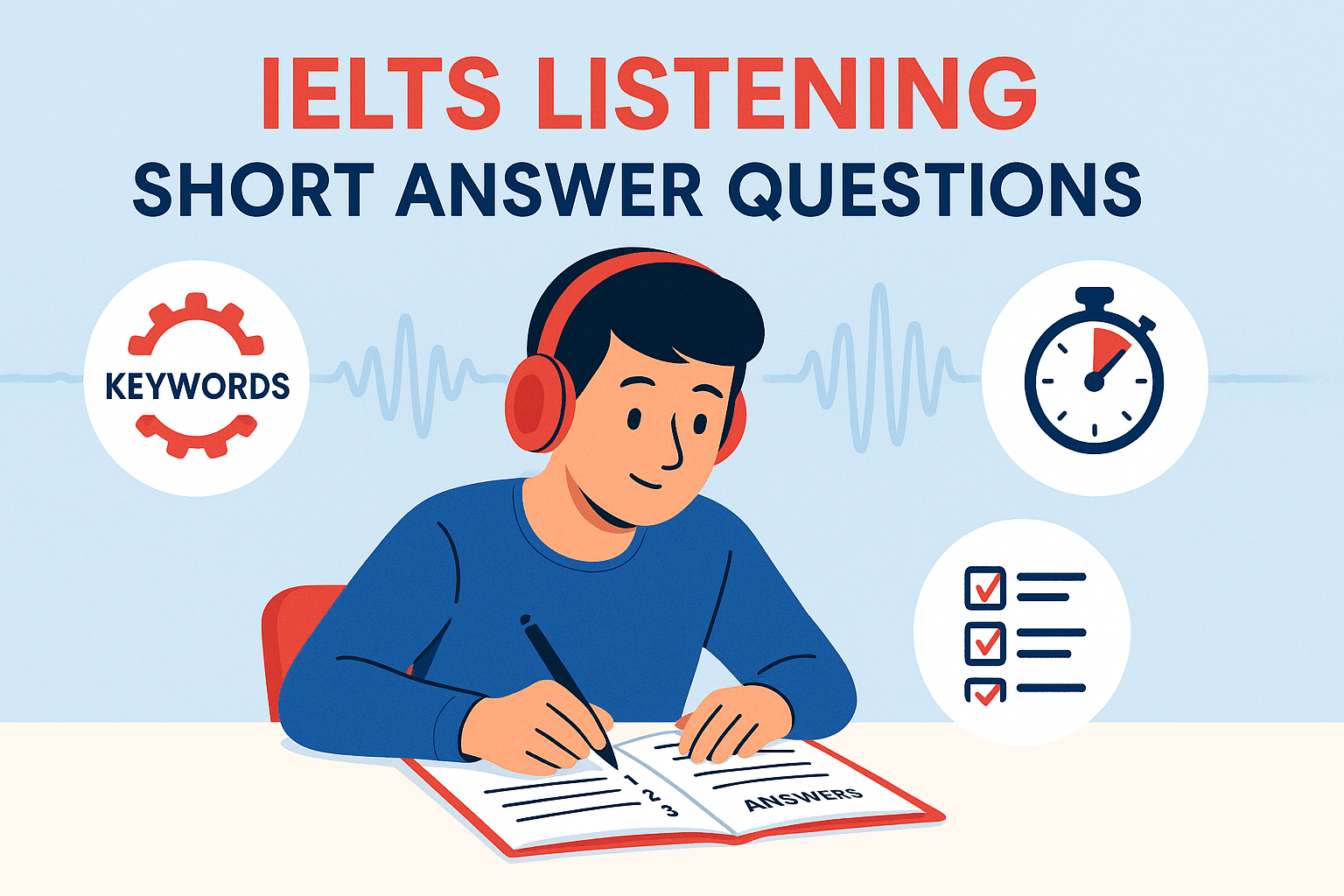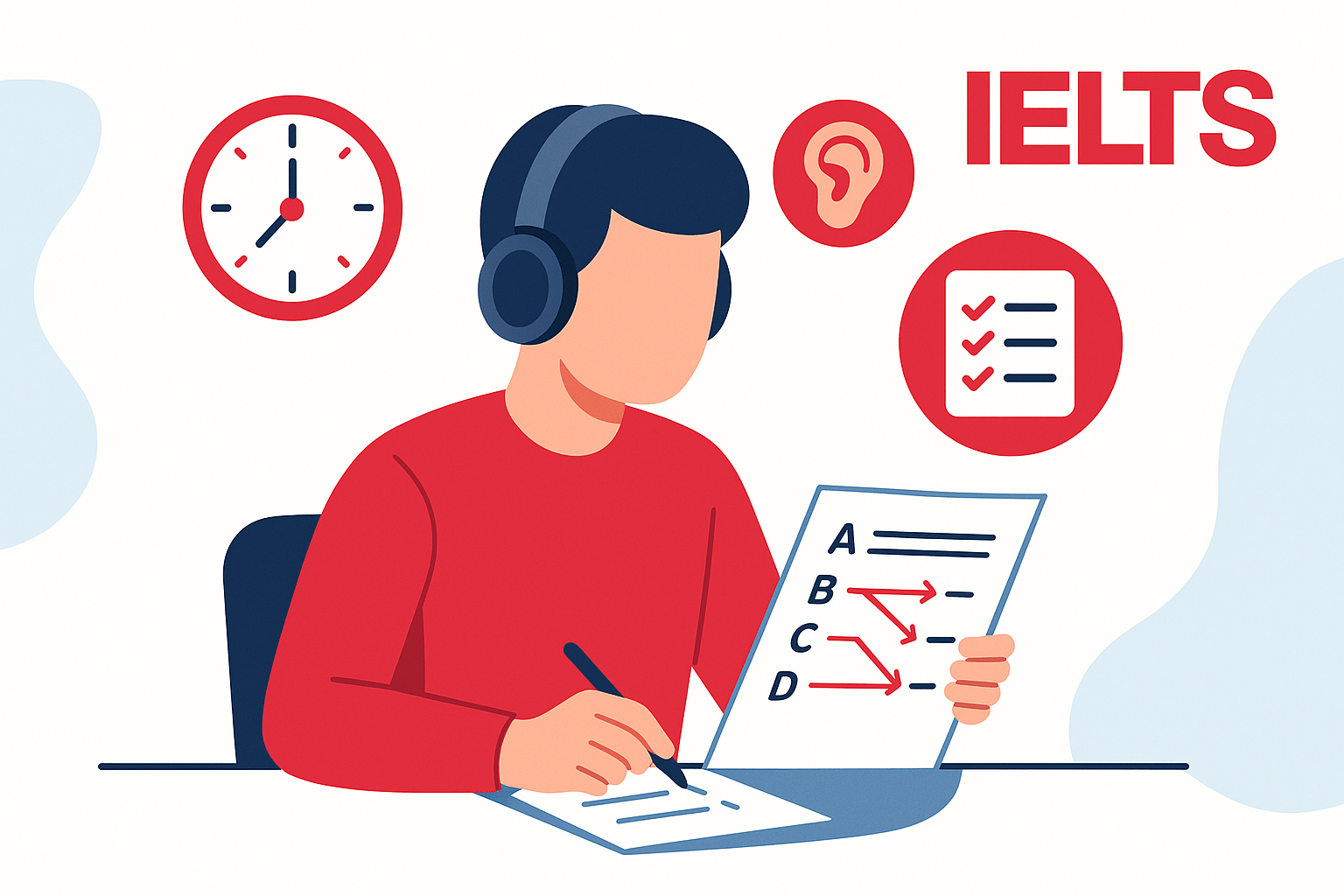If you’re aiming for a high score in the IELTS Listening test, understanding the IELTS Listening Band Descriptors is essential. As an international IELTS teacher who’s helped thousands of learners globally, I’ve seen how this single insight can turn confusion into clarity—and dramatically improve scores.
Why Understanding Band Descriptors Is a Game-Changer
Many of my students initially focus solely on practice tests. While those are useful, they often hit a ceiling in their scores. One recurring issue? They don’t understand how IELTS examiners assess their performance. Knowing what “comprehension,” “consistency,” and “accuracy” actually mean in IELTS terms makes all the difference.
For example, one student from Turkey, Ahmed, kept scoring 6.5 in Listening despite strong grammar and vocabulary. Once we went through the band descriptors together, he realised he was missing key answers due to minor spelling mistakes—hurting his accuracy. After fixing that, he jumped to a band 8 in two weeks.
What Are IELTS Listening Band Descriptors?
Band descriptors are criteria that IELTS examiners use to assess your listening performance. Unlike the Writing or Speaking sections where descriptors are more openly available, Listening scores are based on raw marks converted into band scores. However, the logic behind how answers are evaluated is based on key pillars:
- Accuracy: Did you get the exact answer the speaker said?
- Comprehension: Did you understand the meaning behind the audio?
- Detail: Were you able to pick up specific information, even if it was paraphrased?
- Consistency: Are your correct answers spread throughout all four sections?
You can check the official guidelines on IELTS.org, or explore test prep from British Council or IDP for more on scoring principles.
How Examiners Think: Breaking Down the Assessment
Let’s go deeper into what these descriptors mean in practice:
Accuracy Isn’t Just About Spelling
Examiners won’t give you half marks for a nearly correct answer. If the answer is “environmental pollution” and you write “environment pollution,” it’s marked incorrect. I’ve seen students lose 4–5 marks per test due to minor oversights. Using consistent spelling practice with official test samples can make a huge difference.
Detail Makes or Breaks Band 7+
Listening for detail means paying attention to synonyms, numbers, dates, and names. In the Part 2 map section, if the speaker says “adjacent to the library,” and you write “near the library,” it might be marked wrong. Detail is all about precision.
Comprehension Goes Beyond Hearing Words
This is where many intermediate students get stuck. They hear the words but fail to understand the speaker’s intent. A classic example is when a speaker uses sarcasm or correction: “We were planning a picnic, but due to the rain, we cancelled it.” The correct answer is about the cancellation—not the picnic plan.
Consistency Across All Sections
Examiners notice patterns. If you score well in Parts 1 and 2 but poorly in 3 and 4, your inconsistency suggests comprehension gaps. To build this skill, try practice sets that gradually increase in difficulty. My full guide on this can be found in IELTS Listening for Band 7–9: Complete Guide.
Real Student Mistakes: What to Avoid
I regularly review practice tests submitted by my online students, and here are the most common issues I’ve seen:
- Writing more words than allowed (e.g., 4 words instead of the 3-word limit).
- Mishearing numbers (e.g., 15 vs. 50) due to unfamiliar accents.
- Missing key paraphrases like “approximately” instead of “about.”
For a deeper look at these problems and how they affect scoring, check my blog: IELTS Listening: Common Errors & Band Descriptors
How to Align Your Practice with Band Descriptors
Here’s what I tell all my students:
- Use official IELTS practice materials and analyse why each answer is correct.
- Review your mistakes, not just your score.
- Train with a variety of accents—British, Australian, Canadian—to improve comprehension.
- Practice under timed conditions to build exam-day stamina.
One of the most effective exercises I use is “audio prediction.” Before the audio starts, look at the questions and predict the type of information expected: a name, a number, a verb, a location? This technique builds awareness of how to listen for detail and comprehension.
FAQs on IELTS Listening Band Descriptors
Q1: Are band descriptors officially published for the Listening test?
No, not in the same way as Speaking and Writing. But score conversion tables and examiner training guidelines indirectly reflect the same assessment criteria: accuracy, detail, comprehension, and consistency.
Q2: How many answers do I need for Band 7 or 8 in Listening?
Usually, 30 correct answers = Band 7, and 35+ = Band 8. You can verify this on IELTS.org.
Q3: Can spelling errors affect my band score?
Yes. If the word is spelled incorrectly, even slightly, it’s considered wrong—accuracy matters!
Q4: How do I improve comprehension for Part 4 of the Listening test?
Focus on TED Talks, academic lectures, and BBC interviews. These mirror the complexity of Part 4 and improve your ability to process longer speeches.
Q5: Is it possible to jump a whole band in Listening in one month?
Absolutely—if you address the root cause. I’ve seen it happen repeatedly once students understand the band descriptors and practice with intent.
Ready to align your listening practice with how examiners think? Don’t just aim for more correct answers—aim for strategic listening based on the IELTS Listening Band Descriptors.
Want more help? Check out IELTS Listening for Band 7–9: Complete Guide or IELTS Listening: Common Errors & Band Descriptors for targeted support.





One Response